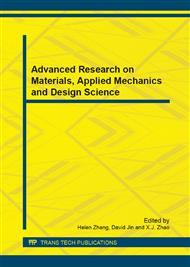p.128
p.132
p.136
p.140
p.147
p.151
p.156
p.161
p.169
Effect of the Er on Resistivity and Spreading Properties of Bi5Sb8Sn Solder Alloy
Abstract:
In this paper a novel quaternary alloy is formed by adding a small amount of rare earth Er (RE) into Bi5Sb8Sn solder alloy to improve its technological properties. The influences of Er on the resistivity and spreading properties of the novel solder alloy were systematically investigated. Studied results show that adding 0.25~0.75wt.% RE into Bi5Sb8Sn solder alloy, the resistivity changes little,while the wettability demonstrated a significant improvement.The spreading area reaches 27.22mm2 and increases by 23% than the Bi5Sb8Sn matrix soler when the content of RE is 0.5wt.%.With increasing the content of Er ,the spreading area of solder alloy decreases, but it is still higher than that of the Bi5Sb8Sn solder alloy. It is mainly closely related to new phases with RE ,the form of compounds and thickness of interface intermetallic compounds in the Bi5Sb8SnRE solder alloy.
Info:
Periodical:
Pages:
147-150
Citation:
Online since:
June 2013
Authors:
Keywords:
Price:
Сopyright:
© 2013 Trans Tech Publications Ltd. All Rights Reserved
Share:
Citation:


